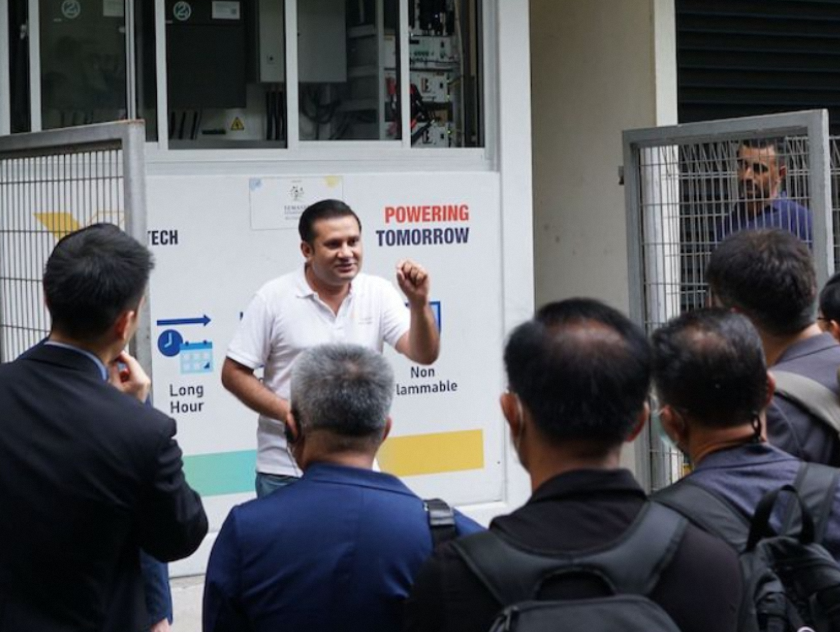The industry contributed S$82 billion in manufacturing output in 2019 — a quarter of Singapore’s total manufacturing output — and also employs around 25,000 people.
In fact, one of the world’s largest chemicals export hubs is right here on Jurong Island, producing chemicals that are essential in making our everyday products. Check out five of such items!

1. Midsoles in your sports shoes
Can’t stop raving about how comfy your new kicks are? One reason why your sports shoes feel so cushioned is because of their midsoles. Deciding on a material to use for the midsoles is tricky. You need something that’s not only flexible, lightweight and shock absorbent, but also durable.
Enter TAFMER™, a type of elastomer (a kind of rubbery material) made by Mitsui Elastomers Singapore that’s lighter, more elastic and has a lower melting point than other compounds. It’s also very versatile and is used in a wide range of products, from automobile parts to packaging materials.

2. Toothpastes
When you flash those pearly whites, it's partly thanks to the sodium bicarbonate in your toothpaste, which helps keep your teeth clean.
Produced by Seqens, sodium bicarbonate is an alkali that helps to neutralise the cavity-causing acids produced by bacteria in dental plaque. The particles’ diamond shape makes them mildly abrasive; just rough enough to help clean your teeth, but not damage the enamel.

3. Solar panels
Hydrochloric acid is a chemical we often came by during science classes, but did you know that this chemical is used in the production of solar panels? Solar panel manufacturers use hydrochloric acid to purify silicon, which is used in the manufacturing of solar cells.
Companies such as Chemical Industries (Far East) produce hydrochloric acid, which is also commonly supplied to pharmaceutical, semiconductor and waste treatment companies to regulate the alkalinity of solutions. Hydrochloric acid, blended with hydrogen peroxide, is also used in the etching of integrated circuit boards found in many of our electronic devices.

4. Electronic devices
Ever wondered what materials go into the making of the sophisticated electronic products around you? Chances are that they are made of a high-performance plastic polymer called XYRON™.
Manufactured by Asahi Kasei Plastics Singapore, XYRON™ is extremely heat-resistant and has great electrical properties. This makes it ideal for many other products like medical devices and automotive parts. Moulded parts made from XYRON™ are also used to produce junction boxes and connectors that go into the assembly of solar panels.

5. Fabric softeners
Imagine if your clothes gave you a tiny electric shock each time you took them out of the washing machine. Fabric softeners not only give you softer and fluffier fabrics, they also impart antistatic properties, as they reduce static electricity build-up caused by the spinning of clothes in the washing machine.
Nouryon Surface Chemistry produces a type of antistatic agent called quaternary ammonium compounds, or quats. The use of quats isn’t just limited to fabric softeners, they’re also used as surface-active agents in agriculture, asphalt and personal care products.
Who knew that the chemicals made on Jurong Island played such a huge role in our everyday lives? The next time you head out for a jog or help the fam out with the laundry, you can better appreciate the thought and work that goes into making the things around you!
